Onions are a common ingredient in many kitchens throughout the world, they can add taste and nutrients to a wide range of recipes. Whether you have a vast garden or a little balcony or patio, growing onions at home may be a fun and gratifying activity.
Onions are a fantastic choice for beginning gardeners since they are easy to cultivate and can be planted from seeds or sets. In this guide, we’ll go over the fundamentals of growing onions, such as the ideal growth conditions, soil and water needs, and harvesting and storage suggestions. You may learn how to grow onions and get the rewards whether you want to add some fresh food to your meals or just want to try your hand at gardening.
A Brief History
Onions have been a part of human diets for at least 7,000 years.
In fact, onions have been cultivated since prehistoric times and were among the earliest cultivated crops. They are believed to have originated in central Asia, with evidence of their use being found in ancient Egyptian tombs, as well as in ancient Greek and Roman texts.
Today, onions are grown all over the world and are a key ingredient in many types of cuisine. Onions come in many varieties, including white onions, yellow onions, red onions, and green onions. They can be eaten raw or cooked and used in salads, soups, stews, sauces, stir-fries, and other dishes.
Onions are not only tasty but also highly nutritious. They are packed with vitamins A and C, as well as fiber and minerals such as potassium and magnesium. Onions also contain compounds that may help protect against certain diseases such as cancer and heart disease.
In some cultures, onions are also thought to bring good luck or ward off evil spirits. Whatever the reason for cultivating them, onions remain an essential part of many diets around the world today.
Nutritional Benefits
Onions are not only delicious but also packed with important nutrients. They are low in calories and high in fiber, making them a great addition to any healthy diet. Onions are also rich in vitamins and minerals, including vitamin C, vitamin B6, potassium, and folate.
One of the most important nutritional benefits of onions is their high antioxidant content. Onions contain a group of antioxidants known as flavonoids, which have been shown to have anti-inflammatory and cancer-fighting properties. These antioxidants can help protect the body against damage from free radicals, which are unstable molecules that can cause cellular damage and lead to chronic diseases like cancer, diabetes, and heart disease.
Onions are also a good source of prebiotic fiber, which can help promote the growth of healthy gut bacteria and improve digestion. This can lead to better nutrient absorption and a stronger immune system.
Another important benefit of onions is their sulfur content. Sulfur is a mineral that is essential for many biological processes in the body, including the production of enzymes and the formation of connective tissue. Onions are one of the best dietary sources of sulfur, which can help support healthy skin, hair, and nails.
Overall, onions are a nutritious and flavorful vegetable that can provide a range of health benefits. Whether you enjoy them raw in salads or cooked in soups and stews, onions are a great addition to any healthy diet.
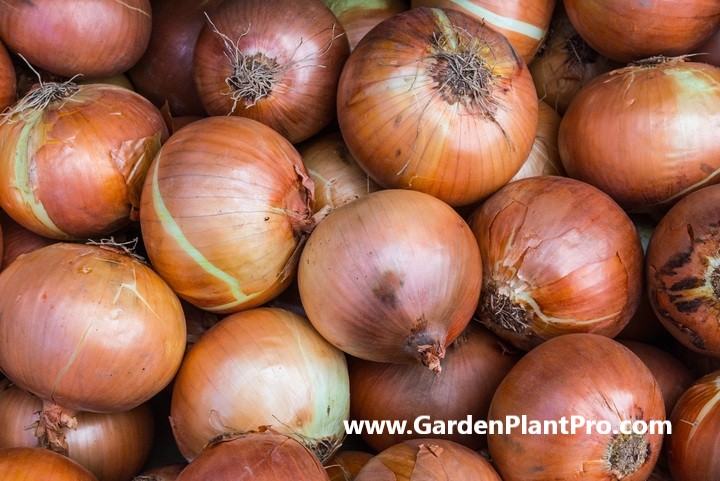
Common Varieties & Their Uses
When it comes to growing onions, there are many varieties to choose from. Each has its own unique flavor and texture, and can be used in a variety of dishes. Here is a brief overview of some of the most common varieties and their uses:
Yellow Onions: Yellow onions are the most widely used of all onion varieties. They have a sweet, mild flavor that adds depth and complexity to dishes. They are best used for sautéing, baking, or roasting.
White Onions: White onions have a sharp, pungent flavor that is best suited for adding a kick to dishes. They are often used as an ingredient in Mexican cuisine such as salsa or guacamole.
Red Onions: Red onions have a sweet flavor and offer a beautiful presentation when cut in half or thinly sliced. They are best used raw in salads or as a garnish on sandwiches and burgers.
Sweet Onions: Sweet onions are mellow and sweet, making them perfect for those who don’t like the sharpness of other onion varieties. They can be eaten raw in salads or cooked in stir-fries and casseroles.
Shallots: Shallots have a sweet, mild flavor that lends itself to sauces, dressings, and marinades. They also work well when added to soups and stews.
Scallions: Scallions have a milder flavor than other onion varieties, which makes them great for adding subtle onion flavor to dishes without overpowering them. They can be used raw in salads or cooked with meat and vegetables.
Pearl Onions: Pearl onions have a sweet taste with just a hint of astringency; they are great for pickling or roasting whole and tossing into salads for added crunch.
DIY PROJECT: Collect rainwater no matter where you live...
This DIY project is the best way to legally collect rainwater NO MATTER where you live. Get chlorine-free water, cut down on your water bills, and have enough for an emergency situation or to water your garden. Read More Here...
When To Sow
When it comes to sowing onion seeds, timing is everything. As part of the Allium family, onions are a cold-season crop and can take up to 200 days from sowing to harvest.
For the home gardener, this means that near the end of winter, onion seeds can be sown indoors in a tray or pot of moist seed compost. With adequate light and warmth, they will soon be ready to be transplanted outdoors in spring when the danger of frost has passed.
Once transplanted outdoors, it is important to ensure that they are spaced 4 to 5 inches apart. Dig a narrow furrow, sow seeds and cover lightly with Yates Black Magic Seed Raising Mix. Onion seeds only need to be sown 6mm deep, so don’t be tempted to sow too deeply.
Once planted, onions need regular watering and fertilizing throughout their growing season. This will help them grow strong and healthy, ensuring a good harvest come autumn. When the time comes for harvesting, keep an eye out for yellowing foliage which is the tell-tale sign that your onions are ready for picking!
Choosing A Suitable Location In The Garden
When choosing a suitable location for your onions in the garden, you need to consider a few key factors. First, select a spot that receives plenty of sunlight. The more energy they can get from the sun, the larger and more abundant your crop will be. Also, ensure there are no other plants that could shade your onions, as this can impede their growth.
Once you have identified an area with enough sunlight, prepare the soil. Make sure it is well-drained and has a good level of organic matter. If needed, add some compost to improve soil quality and fertility levels.
Preparing The Soil
Preparing the soil is an important step in growing your own onions. Prior to planting, it is essential to ensure that the soil is well-cultivated and has a pH between 6.0 and 7.0. To do this, loosen the soil to a depth of 12 inches and add 1 to 2 inches of compost or aged manure. Additionally, you may wish to add plenty of Tui Sheep Pellets and compost for extra nutrients.
The more energy the onions can get from sunlight, the larger their bulbs can grow. Therefore, onion plants should be planted in full sun in order to maximize their growth potential.
By taking the time to adequately prepare your soil, you can ensure that your onions will have the best opportunity to thrive and produce a healthy crop.
Planting The Seeds Or Seedlings
Now that you’ve chosen your location, prepared the soil and are ready to sow, it’s time to plant the seeds or seedlings. Onion seeds are small and can be sown directly into the ground or in trays. When sowing directly, it’s important to space them out evenly, about 1cm apart. Cover the seeds lightly with a thin layer of soil and water gently.
If sowing in trays, poke three or four ½ inch wide drainage holes in the bottom of each container before filling it with seed compost. Sow the seeds in the compost and cover lightly with another thin layer of compost.
If you’re planting seedlings, be sure to provide them with some bottom heat from a propagator to help them germinate faster. Once big enough to handle safely, transplant your seedlings into individual pots and place them in a sunny spot indoors for two weeks before planting outside in your garden. This will help reduce shock in the plants and give them a chance to adjust to their new environment.
When selecting onion varieties for your garden, it is important to consider their particular growing requirements as they can be quite different from one variety to another. Make sure you choose varieties that suit your climate and soil conditions for best results. With careful planning and preparation, you can enjoy an abundant crop of onions all season long.
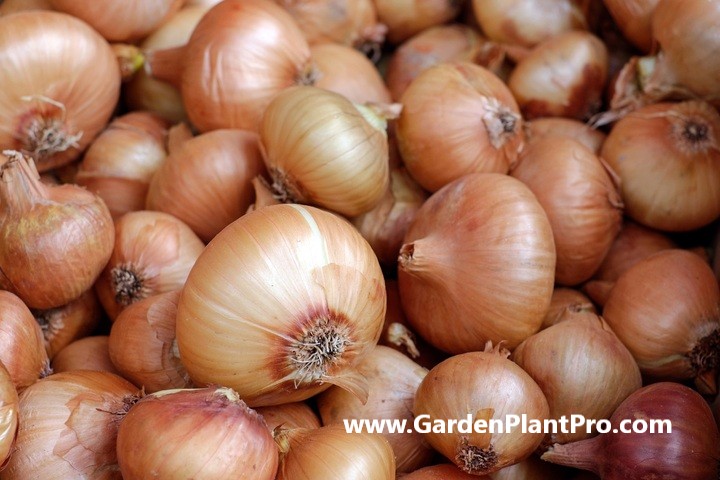
Caring For The Seedlings
Once the seedlings are planted, it’s important to ensure they get adequate care to ensure a good harvest. After planting, water the seedlings thoroughly, making sure that the soil is moist and not soggy. Make sure to keep the soil moist but not waterlogged during the growing season. Depending on the weather conditions, this may mean watering every few days or more frequently. Fertilize the seedlings with a balanced fertilizer at least once a month.
If weeds start to encroach on your onion patch, it’s best to remove them by hand. This will help prevent competition for resources and allow your onions to thrive. If needed, you can use an organic mulch such as shredded leaves or straw around your seedlings to help keep weeds down and retain moisture in the soil.
If you live in a hot climate, consider planting onions in areas with some shade during the hottest parts of the day. Covering seedlings with shade cloth can also help protect them from extreme temperatures and reduce the risk of heat stress.
In addition to providing adequate moisture and nutrients, it’s important to pay attention to other signs of stress in your onion patch. Watch for signs of pests or disease and take action if needed. If you notice any discoloration or wilting leaves, take steps to address the issue immediately as these can be signs of disease or pest infestation.
Do you have some charcoal in your house right now? We call charcoal a “miracle leftover” for anyone who wants to be a little more self-sufficient and cut costs. That’s because it can help you with so many different things around the house and garden. You can even use it to make an energy-free fridge. Read More Here...
Watering & Fertilizing
Once your onions are planted, it’s important to take care of a couple of things in order to ensure healthy and bountiful harvests. Watering and fertilizing are two essential components of successful onion growing.
When it comes to watering, onions prefer soil that is dark and moist. The soil should be watered daily, but you don’t need to soak it. Instead, give your onions a good drink until the top couple of inches of soil are moist.
Fertilizing is also essential for big, flavorful bulbs. Choose a timed release, balanced granular fertilizer, like 8-8-8 or 10-10-10. Apply the fertilizer according to the instructions on the package before you plant your onion seedlings or sets. Once planted, continue to fertilize every 4-6 weeks for optimal yields.
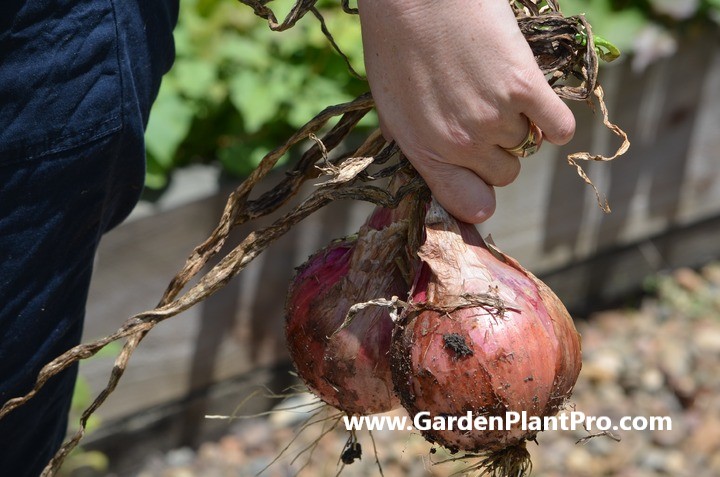
When & How To Harvest
When the foliage of your onion crop begins to wilt and fall over, it’s time to harvest your onions. When harvesting, take care not to bruise or damage the bulbs. Gently pull them out of the ground, cutting off the leaves a few centimeters above the bulb. If the weather is dry and there’s no danger of frost, lay the onions right on top of the soil for a few hours before transferring them to a dry, cool place for further curing.
Onions can be harvested as soon as they reach a usable size. If you intend to store them for longer periods of time, you can wait until the green tops are completely dried out and begin to turn brown. This is usually between 60-90 days after planting.
When harvesting onions, take care not to damage their outer layers. If they’re dirtied or bruised during harvesting, they should be used immediately rather than stored. Sort through your harvested crop and discard any that are damaged or diseased.
Once harvested and sorted, lay out onions in a single layer in an airy, shady spot and leave them to cure for two weeks before storing. During this period, their outer layers will become more durable and their shelf life will increase significantly. After curing is complete, store your onions in a cool dark place for up to six months. Make sure to check regularly for spoilage and discard any that have gone bad. With proper care and attention, your onion crop will provide you with delicious produce all year round.
Storing & Preserving
Storing and preserving onions is an important part of growing them successfully.
Onions that are meant to be stored for the winter must be cured for two to four weeks. Onions can generally be stored up to eight months when stored properly in a cool, dry area with temperatures between 32°F to 45°F (below 8 degrees C). The ideal space for storing onions is a garage or unheated room in the house, away from direct sunlight and with good ventilation.
When it comes time to store your onions, make sure that each onion has plenty of space between them. Transplants should be spaced 4 to 5 inches apart. Also, make sure that your onions are completely dry before storing them. If there is excess moisture, it can lead to rot and spoilage.
If you have harvested the onions before they have had a chance to cure properly, they can still be stored but over a shorter period of time – usually 4-6 weeks. This is because they haven’t had the chance to develop their full flavor and texture yet. Store these in the refrigerator or in an area with temperatures between 40°F and 50°F – just make sure they are still well ventilated!
Once you have harvested and stored your onions, be sure to check them regularly for any signs of spoilage or rot. If you see any mold or discoloration on the onion, discard it immediately as it can quickly spread to other onions in the batch. By taking extra care when storing and preserving your onions, you can ensure that you get the best flavor and texture from your harvest.
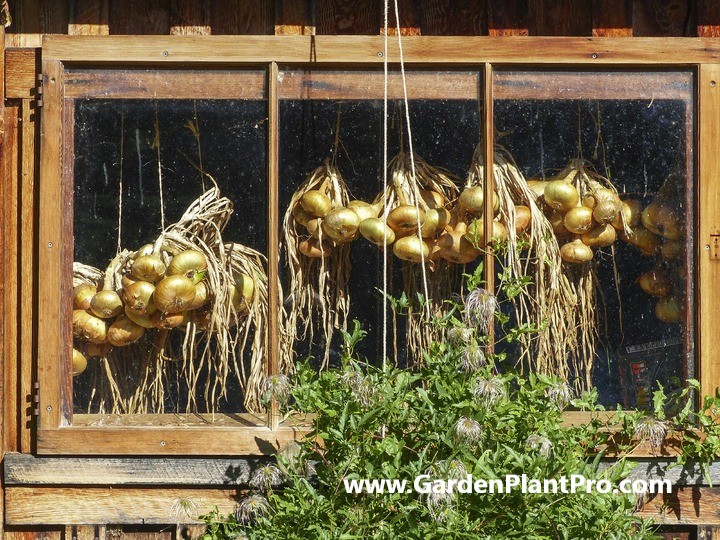
Common Diseases & How To Control Them
Onions are a hardy plant, but they can be susceptible to a few common diseases. To keep your onion crop healthy and productive, it’s important to be aware of these diseases and how to control them.
Downy Mildew
Downy mildew is one of the most common diseases of onions. It is caused by a fungus that is spread by wind, water, and insects and can cause yellow spots on the leaves, stunted growth, and premature death of the plants. To prevent downy mildew, it’s important to practice good crop rotation, avoid overcrowding, and keep your plants well-watered. If you do notice signs of downy mildew, make sure to dispose of affected plants quickly and spray the remaining plants with an appropriate fungicide.
Onion Smut
Onion smut is another common disease that affects onions and other Alliums. It is caused by an airborne fungus and can cause yellow or brown spots on the leaves or bulb. To prevent onion smut, make sure to practice good crop rotation and monitor your crops regularly for signs of infection. If you do spot any infected plants, make sure to remove them immediately to prevent the spread of the disease.
Fusarium Basal Rot
Fusarium basal rot is a fungal disease that can cause bulb rot in onions and other Alliums. To prevent it from occurring in your crop, make sure to practice good crop rotation and avoid overcrowding your plants. You should also ensure your soil has adequate drainage as this will help reduce humidity levels which can encourage the spread of this disease. Additionally, never plant onions in soil that has been used for growing potatoes or tomatoes as these crops can harbor spores which can cause Fusarium basal rot in onions.
Common Pests & How To Control Them
Onions are susceptible to a variety of pests, including aphids, wireworms, cutworms, thrips, and onion maggots. To control these pests, it is important to inspect your plants regularly and take preventative measures when necessary.
CASE STUDY: We've been living off the grid for the last 40 years...
In all that time an electric wire has never been connected to our house. We haven’t gotten or paid an electricity bill in over 40 years, but we have all the electricity we want. We grow everything we need, here, in our small backyard. We also have a small medicinal garden for tough times. Read More Here...
Aphids
Aphids are small insects that suck sap from the leaves of onions. To control aphids, you can use insecticides or spray the plants with a strong jet of water. Insecticidal soaps and neem oil are also effective in controlling aphids.
Wireworms
Wireworms are small worms that feed on onion roots and bulbs. The best way to control them is to cultivate the soil deeply and remove any weeds or debris that may harbour them. If infestations occur, there are several insecticides that can be used to control them.
Cutworms
Cutworms are caterpillars that feed on onion leaves and stems. They can be controlled with insecticides or by hand-picking affected plants.
Onion Thrips
Thrips are tiny insects that suck sap from onion leaves and cause yellowing of the foliage. If you notice thrips on your onions, use insecticides to treat the affected plants. You can also cover the plants with a floating row cover or a light-coloured fabric to reduce thrips populations.
Onion Maggots
Onion maggots feed on onion roots and bulbs, causing them to rot. To control onion maggots, use insecticides or rotate your crops so they don’t return to the same area each year. Additionally, you can also trap adult flies using yellow sticky traps or remove infested plants as soon as possible to reduce their numbers in your garden.
By taking steps such as cultivating the soil deeply, rotating crops, using insecticides or hand-picking pests when necessary, you can effectively control common onion pests and keep your crop healthy and productive.
Beneficial Companion Plants
Once you have selected a suitable area in your garden and prepared the soil, it is time to start planting the seeds or seedlings of your onions. In addition to planting the onions, it is beneficial to consider companion plants that can help improve the yield, longevity, quality, and growth of all of your flowers, fruits, herbs, and vegetables.
Onions are especially good companions for members of the cabbage family (brassicas), which also includes lettuce and broccoli. Planting members of this family in close proximity to your onions can help reduce the chances of disease and pests. For example, growing cabbage around your onions can help repel flea beetles, which can damage the leaves of both plants. Other beneficial companion plants for onions include garlic, chives, parsley, sage, and rosemary.
In addition to these plants working together symbiotically in terms of repelling pests and stimulating growth, they can also be used together in cooking to create delicious dishes. For example, using a combination of garlic and onion as a base for a soup or stir-fry can add depth and complexity to the flavor.
When selecting companion plants for your onions it is important to remember that some vegetables require more sunlight than others. For example, garlic prefers full sun while lettuce prefers partial shade. Therefore it is important to ensure that you select companion plants that are compatible with the amount of sunlight available in your garden.
Finally, when planting companion plants near your onions it is important to keep them separated by enough space so that each plant has ample room for root growth. Additionally, you should make sure that any fertilizers used on one plant will not damage or interfere with the growth of another one.
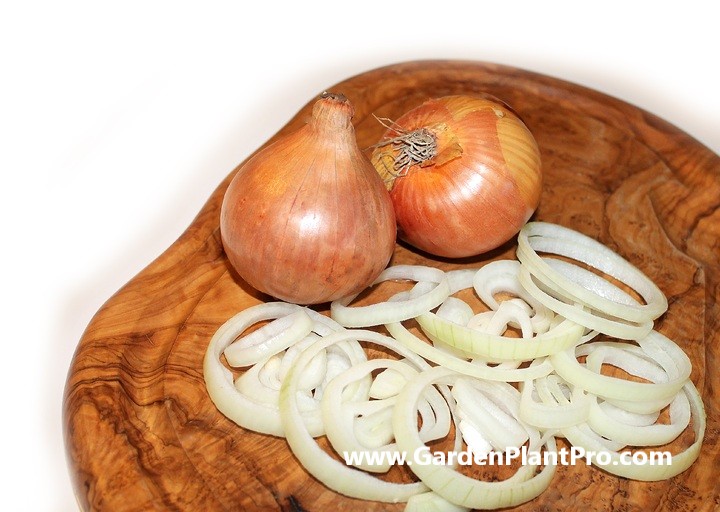
Using Your Onions
Once you have harvested your onions, it’s time to use them in the kitchen.
Onions can be eaten raw or cooked, depending on the type of onion and the recipe. For example, milder onions like Vidalia and Walla Walla are great for salads and sandwiches, while sweet onions such as Texas 1015’s work well in salsas and other raw dishes. For cooking, the more pungent varieties such as yellow or white onions are best.
You can also store your onions for later use. To store them, simply hang them in a cool, dry place or place them in a mesh bag and put them in a cupboard or pantry. Onions should be stored away from light and heat to prevent spoiling. You can also chop your onions and freeze them for up to 6 months.
Onions are incredibly versatile and can be used in a variety of dishes from soups and stews to stir-fries and casseroles. They add flavor and texture to dishes, as well as nutrients like Vitamin C, folate, dietary fiber, calcium and iron. Onions are often used as the base of many dishes such as soups, sauces and gravies as they help to build flavor depth quickly.
When it comes to preparing onions for cooking, there are several different techniques you can use depending on how you want to use the onion. For example, slicing an onion into rings is ideal for adding to burgers or sandwiches, while dicing is great for soups or stews. If you’re looking for an even finer texture, you can mince your onion or grate it for salads or dips.
No matter how you choose to use your onions, they will provide delicious flavor and nutrition to your meals!




